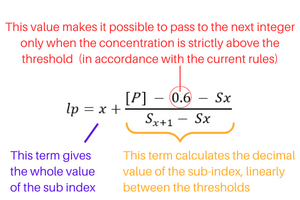A new index for air quality
ICAIR (Cumulative Air Index) is an index that cumulates four regulated pollutants (NO₂, O₃, PM2.5, PM10) at the spatial resolution of 25 meters over the entire region (HD modeling with measurement assimilation).
- There is an hourly version with a 24h forecast so people can take the level of pollution into account in their daily activities: ICAIRh
- It also exists in an annual version: ICAIR365
This new index takes into account the cumulative effects of different pollutants, making it possible to highlight areas of multiple exposure. In its hourly version, it’s based on the European Air Quality Index thresholds. In its annual version, it uses the WHO Air quality guidelines (AQG).









